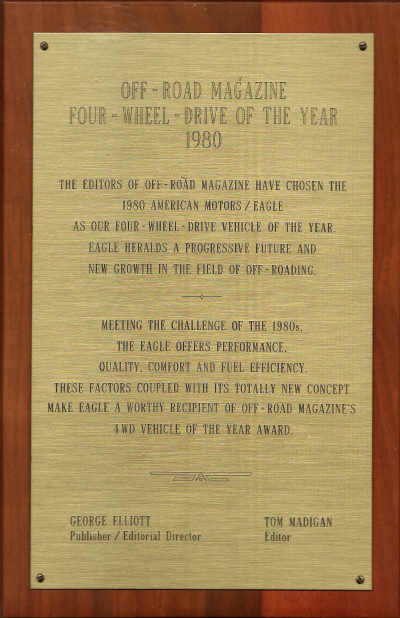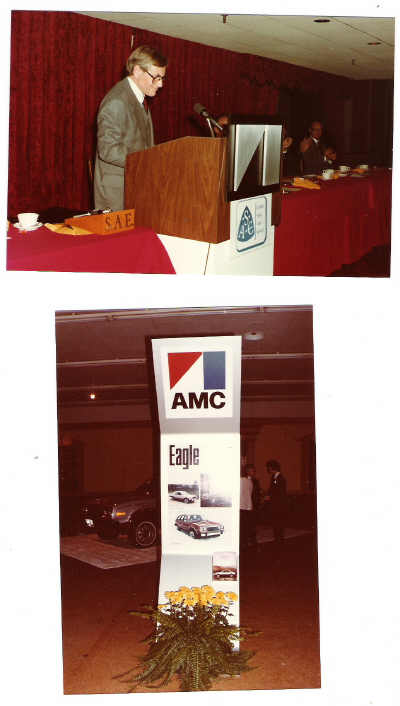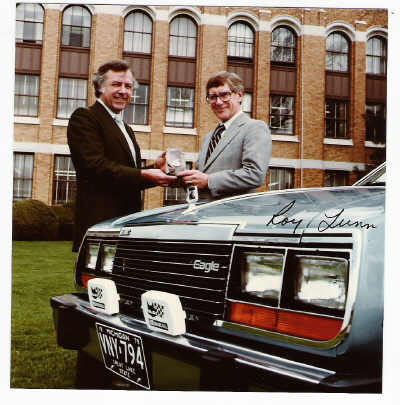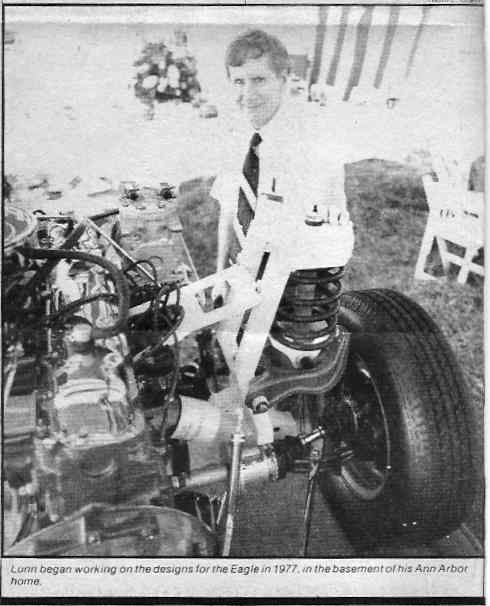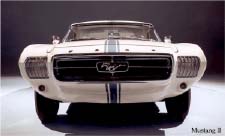Roy C. Lunn
Information contained in this biography was recieved from Mr. Lunn in the fall of 2004 and is used with his permission.
Roy C. Lunn was born in 1925 and was educated in England where he graduated in mechanical and aeronautical engineering. He served two years in the RAF as a UT pilot. After the war, in 1946, he entered the auto industry as a designer of AC cars and then went to Aston Maritin in 1947 where he became assistant chief designer and was responsible for the DB2 program. He joined Jewett Cars in 1949 as chief designer and was responsible for a range of vehicles which included the first plastic bodied car. He drove in competition and was co-driver to Marcel Becquart, driving to victory in the 1952 RAC International Rally. In 1953 he went to Ford of England and was assigned the task of starting a new research facility in Birmingham. This center generated the first prototype of what became the 105 E. Anglia.
Lunn was then transferred to Ford of Dagenham as the car product planning manager to follow the 105-E into production. He immigrated to the U.S. in 1958 to join Ford USA where he became the manager of the Ford Advanced Vehicle Center, working on a whole range of world-wide projects including: Mustang I; a super highway 170,000 pound GCW truck; and Ford's first front wheel drive car, the Cardinal, which became the Taunus 15-M in Germany.
In 1962 he became a U.S. citizen. Also, during the same year, he and part of his department were put on special assignment to design and develop a GT racing car to beat Ferrari and win the world GT championship. This became the GT-40, followed by the MK II and MK IV that won LeMans four times in succession between 1966 and 1969 and two world championships.
In 1971 Lunn joined American Motors as director of engineering for Jeep which had recently been acquired by AMC. He went on to become vice-president of engineering for AMC with his notable accomplishments being the Jeep XJ Cherokee which was the first of the modern range of SUV vehicles and the Eagle, which was America's first 4WD car. He was also active in the Society of Automotive Engineers becoming their chairman in 1983 and was elected a Fellow of the Society in 1985. He completed his career at AMC by forming and becoming president of Renault Jeep Sport to centralize all AMC and Renault racing activities in the U.S., including the design and production of a low-cost racing car for SCCA, of which more than 500 models have been built. In 1984 he headed the first American entry to drive in the Paris-Dakar rally.
He retired from AMC in 1985 and was immediately called back to become vice-president of engineering for the AM General Corporation (an AMC subsidiary), which was going into production of the HUMMER military vehicle. AMC was facing acceptance problems by the Army and asked Mr. Lunn to correct these problems. After overseeing the corrective actions Mr. Lunn finally retired to his home in Florida in 1987 and then to Italy in 2004, after having spent forty-one years in the design, development and production of automotive vehicles.
Mr. Lunn was in contact with AMC Eagle Nest Staff about two years ago (early 2004). He was very surprised to learn his AMC Eagle had such a following and he does visit the AMC Eagle Nest as a guest. Additionally, he sent to us, for safe keeping and to use to promote the existence of the AMC Eagle Nest some items he had saved regarding the development of the AMC Eagle. We extend our sincerest thanks to you, Mr. Lunn, for taking the time to share with us and for having the foresight and courage to design and implement the production of such a great vehicle! As you can see......we all really love our Eagles! Truely ahead of it's time and still leading the pack as far as we are concerned.
Contents
"Off Road Magazine" Four Wheel Drive Vehicle of the Year
This plaque was graciously given to the AMC Eagle Nest by Mr. Lunn for continued safe keeping.
Mr. Lunn Presenting to the Society of Automotive Engineers
Mr. Lunn Recieving an Engineering Award from the Society of Automotive Engineers
October, 1980 Auto Week Interview with Roy Lunn
Other Roy Lunn info
Roy Lunn related links:
http://www.findarticles.com/p/articles/mi_m3012/is_2_181/ai_70935228 http://www.channel4.com/4car/feature/topten/forgotten-4x4s/forgotten-4x4s-4.html http://www.wagoneers.com/XJ/tech/xjmtr.html
"The Mustang I was an experimental mid-engined, two seated sports car aimed at the Triumph/MG market.
Since it was impossible to build a prototype very rapidly in Detroit, Ford contracted the job to specialist builder Trautman and Barnes in Los Angeles. Planned around a wheelbase of 85 - 90 inches, Mustang I had an engine of 1.5 - 2.0 litres in a steel tube frame covered by a stressed skin aluminium body. An integral rollbar and fixed seats added rigidity. Although the seats didn't adjust, the pedals and steering did, mounting on a sliding box member that allowed positioning to suit any driver.
Roy Lunn (product planner) and Herb Misch (engineer) devised the Mustang I's four wheel independent suspension, then an uncommon feature in Detroit. All shocks and springs were adjustable for ride height and firmness" http://www.allfordmustangs.com/Detailed/120.shtml
"While the Ferrari negotiations were underway, Dearborn brass took steps to create their own racing program, ultimately forming the Britain-based Ford Advanced Vehicles division. Through the 1962 Mustang concept, Ford had already developed a relationship with Roy Lunn, an Englishman who started his career at Ford of Britain but came to the United States in 1958. After working on the Mustang I, Roy Lunn, along with Ray Geddes and Donald Frey, turned toward the racing effort. They found that the "Grand Touring" car Ford conceived to win at Le Mans had much in common with the new Lola GT, a low-slung coupe developed by Eric Broadley in Slough, England, not the least of which was the American V-8 mounted amidships – a rarity for European cars of the time. http://www.ford-gt.com/concept/proud.html
'American Motors devoted three years to its development and, noted Roy Lunn, "unlike most engines available today [it] was not designed for passenger cars and then adapted for trucks. We specifically developed it with our Jeep vehicles and Eagle in mind. That's the reason that performance and durability were of such prime consideration from the very beginning." ' http://www.wagoneers.com/XJ/tech/XJmotors.html
"Roy Lunn Roy Lunn was in the Design Office of Aston Martin in 1949/50, after which he became Chief Engineer at Jowett, and then joined Ford at Dagenham from where he transferred to Dearborn in the Research Division. His present position is Manager of Advanced Concepts, and in this capacity he worked with Ford Advanced Vehicles at Slough from August 1963/64, supervising the development of the cars up to the completion of the first prototype, and the modifications made for them in the early part of the 1964 racing season." http://www.gt40.co.uk/gt40st16.html
Oaky...I know this is not Eagle stuff but....It is Roy Lunn and a nice example of the man's genius:
"With those general parameters, the engineering department set out to craft the prototype for a project referred to as T-5. Three men quarterbacked the effort - Herb Misch, an engineer; Gene Bordinant, a stylist, and Roy Lunn, a product planner. In an unparalleled 21 days, the design for a low, sleek show car with roll bar and retractable headlights went from drawing board to clay mock-up. "
